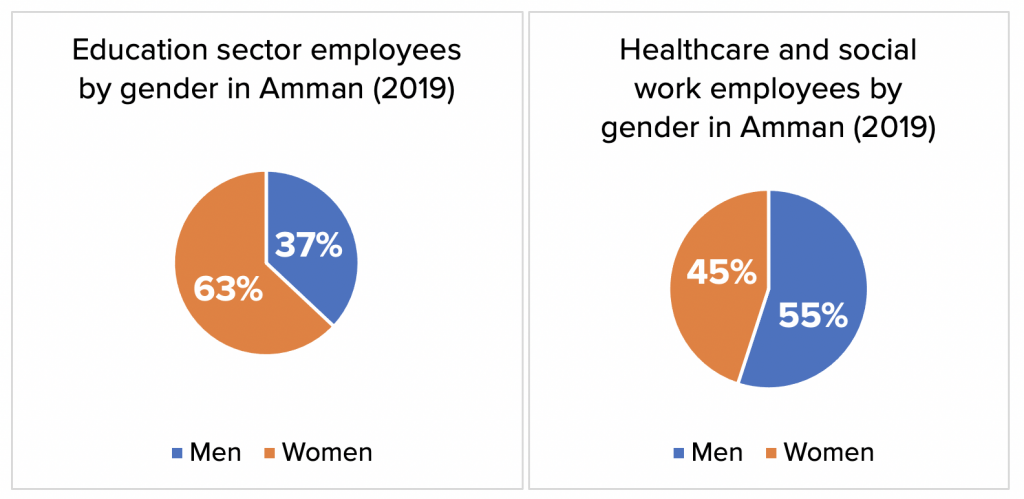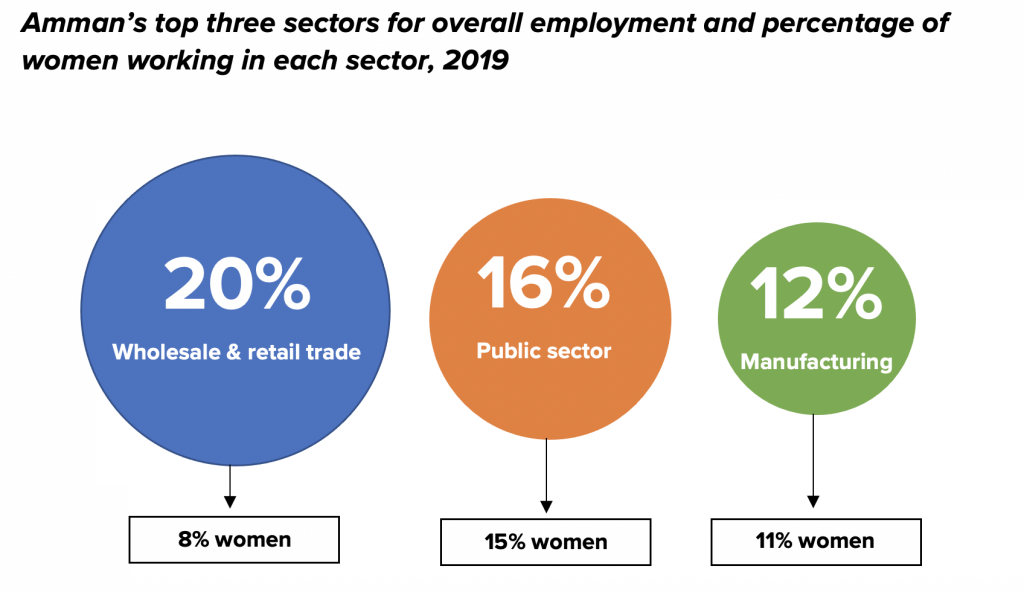Overview of Amman’s female labor force participation
Amman’s female labor force participation rate in 2020 was estimated at 17.1 percent compared to 22 percent in Egypt, 31.4 percent in Saudi Arabia, and 52 percent in the United Arab Emirates. The global average was 47.3 percent in 2019.
This situation is “shocking,” says Jordanian Nour Al Hassan, founder and CEO of translation company Tarjama, because women in Amman are highly educated and are seeking advanced degrees at higher rates than men. Al Hassan explains that Jordan “appears more modern than it actually is, but, in reality, the laws do not support women working. Flexible hours are an issue and on top of that you have cultural barriers.” The only woman-dominated sector in Amman is education, which had 63 percent women workers in 2019 according to Jordan’s Department of Statistics.

Men dominated all the other sectors, with the exception of healthcare/social work, which had 45 percent women workers in 2019. This is not surprising, since worldwide women continue to be overrepresented in education and healthcare sectors.

Compared to the percentage of women in the education and healthcare/social work sectors, the rate of female labor force participation in the largest sectors in Amman—wholesale and retail trade, the public sector, and manufacturing—is quite low. In short, women are extremely underrepresented in the sectors that together make up nearly 50 percent of Amman’s jobs.
Still, statistics about formal employment do not capture the significant informal economic activity in Amman, which includes everything from small online businesses to gig workers. Indeed, it is estimated that over half of all employment in Jordan is informal.
Women are increasingly utilizing new technologies and online platforms to sell handmade goods and offer their knowledge services from home via companies such as Tarjama. This trend will surely buoy women’s labor force participation, but as gender and development scholar Allison Anderson notes, “access to and use of information and communications technology (ICTs) is not in and of itself sufficient to overcome the numerous obstacles to women’s economic participation.” Women still need childcare infrastructure, societal and family support, and viable career paths to unlock the full benefits of ICT. Still, the current female labor force participation rates in Amman do not tell the full story and more accurate data about informal employment rates of women is needed.


Be the first one to comment
Please log in or sign up to comment.